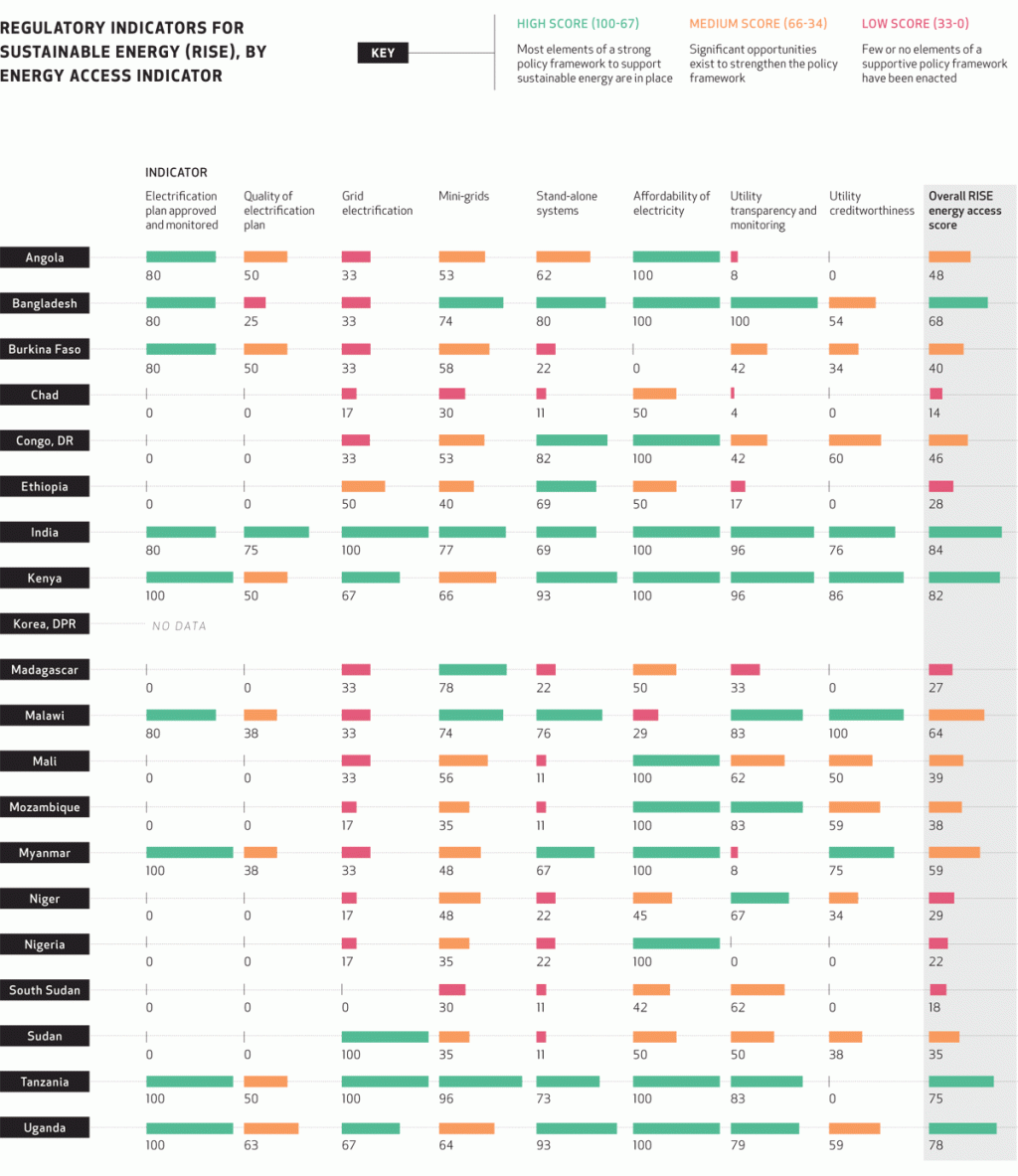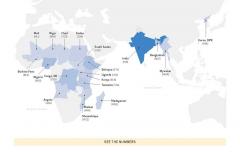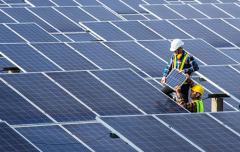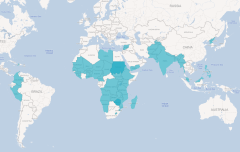Electrification: RISE Indicators for Energy Access

Quick Facts
Context
- Regulatory Indicators for Sustainable Energy (RISE) offers policy makers and investors detailed country-level insights on the policy and regulatory environment for sustainable energy across 111 countries globally.
- The top RISE scorers in energy access generally do well across all three possible energy supply solutions— grids, mini- grids and stand-alone systems— suggesting they are being pursued not as substitutes but as complements as part of comprehensive national energy access strategies.
- High scorers for RISE on access tend to do well across policies for grids, mini-grids, and stand-alone systems suggesting efforts are complementary. Countries like India and Bangladesh are emerging as leaders with an innovative mix of grid and off-grid solutions.
- Utilities play an important role in improving access but RISE shows that many utilities in the developing world are not creditworthy and struggle to make the investments needed to expand electricity networks to the unserved. Dedicated government budget lines to support electrification are often missing and improvements are needed in utility transparency and monitoring. This includes the collection, reporting to regulators and public availability of key information about utility financial and technical performance that can provide a basis for investors and developers to assess investment opportunities. By monitoring the reliability of electricity services utilities can also ensure the high operating efficiency and financial viability of their core business.
- The full cost of connecting to the grid, which varies from US$22 in Bangladesh to US$500 in several Sub-Saharan African countries, exceeds US$100 in the vast majority of countries. The biggest driver of connection costs is capital investment for buying materials, including poles, cables, and transformers. Sub-Saharan Africa has the highest fees, in most cases because customers have to pay for electrical equipment (circuit breakers, meters, cables).
NOTES: 1. No data available for Korea, DPR.
2. Regulatory Indicators for Sustainable Energy (RISE) is a suite of indicators that assesses the legal and regulatory environment for investment in sustainable energy. 3. Doing Business is a relative ranking of 190 economies based on the regulatory environment. It does this by sorting the aggregate scores of 11 topics, each consisting of several indicators, giving equal weight to each topic.
SOURCES: Regulatory Indicators for Sustainable Energy (RISE), World Bank Group, 2017.
“Doing Business 2017: Equal Opportunity for All”, shttp://www.doingbusiness.org/rankings, 2017.
Data extracted from http://rise.esmap.org/ on 06/23/2017. World Development Indicators, World Bank Group, 2014.
Data extracted from http://data.worldbank.org/indicator/SP.POP.TOTL?end=2014&name_desc=false&view=chart on 06/20/2017.




